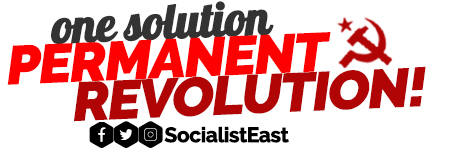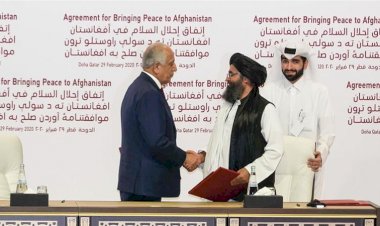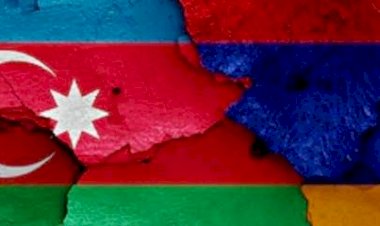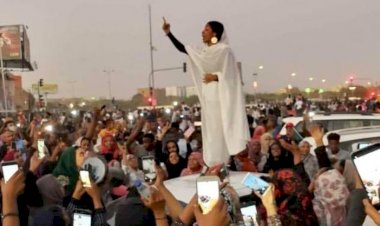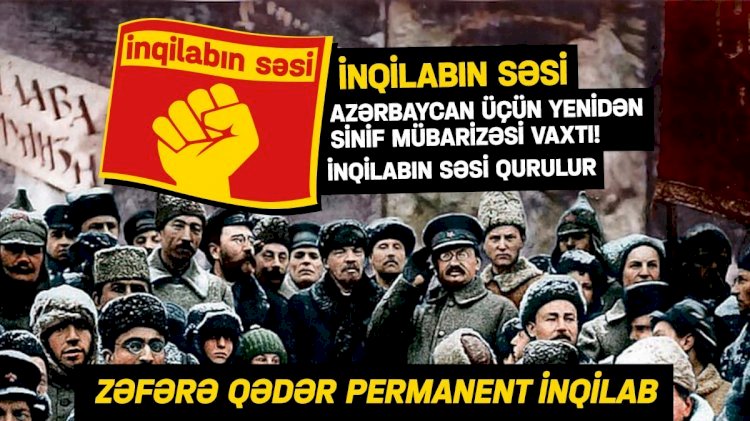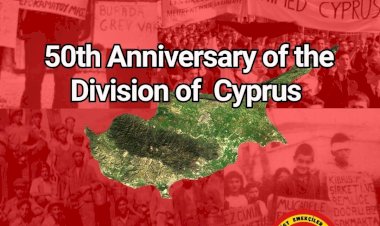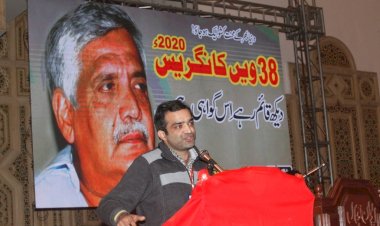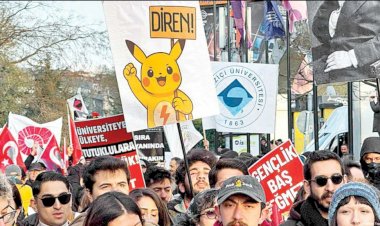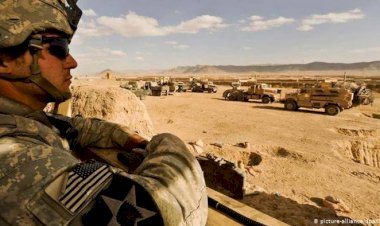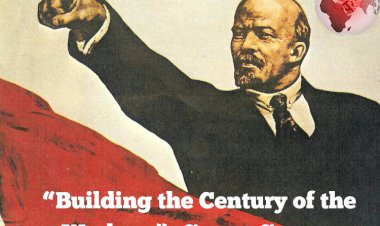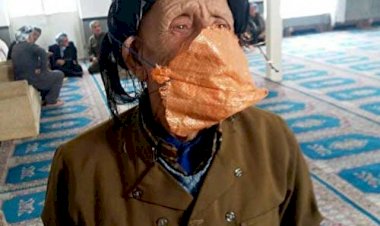Mandatory Response: In the Light of the Nepal Experience — Maoism and Permanent Revolution - V. U. Arslan
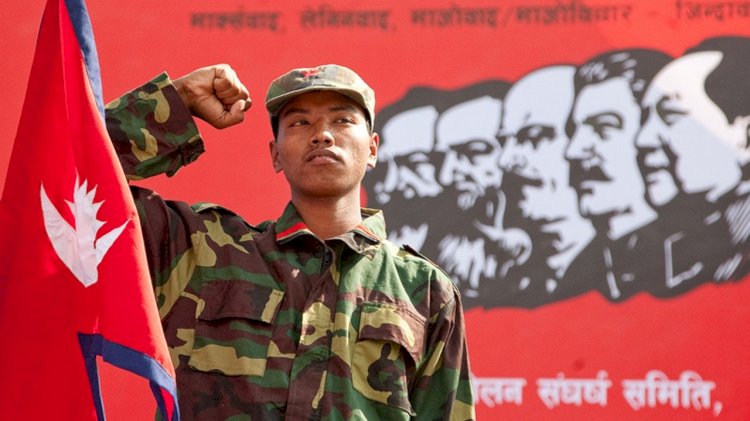
Last month’s popular uprising in Nepal led us to produce a video on the Spartakus YouTube channel, where we both reported on the events and explored their political and theoretical depth.
The basic facts we presented and the conclusions we drew from them must have disturbed Halkın Günlüğü, a publication on the Maoist line, since they published a so-called “response” that amounts to nothing more than a contentless stream of insults.
The title alone makes you smile; you already know what’s coming: “Deriving a Critique of the Maoist Program from the Nepal Uprising by Summoning the Trotskyist Zombie!”
The (unnamed) author elevates classic Stalinist dogmatism to flat-earth levels. Even the most obvious facts are blindly denied. It’s exhausting but we have to keep explaining it, again and again.
“Apparently, the Betrayals in Nepal Have Nothing to Do with Maoism! Really?”
The uprising that broke out in Nepal last month is a direct consequence of the series of rotten bourgeois coalition governments that followed the betrayal of the 2006 Nepal Revolution. In 2006, the workers and peasants of Nepal were told to settle for a bourgeois republic and that republic has now collapsed. The main actor in that betrayal was the CPN(M) - the Communist Party of Nepal (Maoist). Since 2007, the CPN(M) has taken turns in power with another Stalinist party, the CPN(UML) - the Communist Party of Nepal (Unified Marxist-Leninist), sometimes forming joint governments, sometimes alternating, often together with various right-wing parties. They have repeatedly occupied prime ministerial and ministerial seats. For that reason, during the 2025 uprising, the masses rightly held them responsible for the country’s poverty and decay. To explain the theoretical implications of Maoism’s shameful bankruptcy in Nepal, we must briefly recall how the 2006 Nepal Revolution was betrayed.
In 2006, Nepal was on the brink of a full-scale revolution. The monarchy had collapsed, the ruling class had lost control, and the people had taken up arms. The founding of a workers’ republic was within reach. Yet the guerrilla organization leading the struggle, the Communist Party of Nepal (Maoist), turned its back on a socialist revolution. Instead of pushing forward, it chose to strike a deal with the Nepali bourgeoisie and its patron, U.S. imperialism. At the time, the most prominent Maoist party on the planet as Maoists around the world themselves admitted, the CPN(M), ended up aligning with U.S. imperialism. Just think about it; those who spent decades slandering Trotsky through massive state propaganda machines, unable to prove a single lie, have themselves ended up serving as tools of U.S. imperialism. Even now, with no shame at all, they lash out at those of us who tell the truth and still throw insults at Trotsky. We’re not surprised since we’ve long known their nature.
The truth the author refuses to face is that the CPN(M) acted exactly in line with its own “Maoist program.” Claiming that Nepal was a feudal society unfit for a socialist revolution, the CPN(M) had deliberately halted the revolution at the “so-called” democratic stage. In other words, as in so many revolutions before it; Spain (1936), Iran (1979), Greece (1944), Portugal (1974), Chile (1973), and Indonesia (1965), the 2006 Nepal Revolution was once again halted and betrayed under the familiar Stalinist pretext of the “democratic stage.”
The CPN(M) and its once-celebrated leader Prachanda stood before two choices: to proclaim workers’ power and ignite the world revolution (the path of permanent revolution), or to compromise with the imperialist-capitalist powers and take the road of a democratic republic. The CPN(M) failed to go beyond the Maoist program and, inevitably, chose the latter. Life allows no third path. There is no middle ground thatonly socialism or capitalist reaction. Today, from Madagascar to Peru, from Morocco to Iran, the peoples rising in revolt face no democratic stage either. Any popular movement that does not aim at the overthrow of capitalism and the establishment of workers’ power is doomed to stagnation and defeat. That is why the phrase “the only road is permanent revolution” is not just a slogan, it is a fact of life itself.
In 2006, as the inevitable outcome of the Stalinist/Maoist theory of stages, the CPN(M) remained within the bounds of capitalism and, together with U.S. imperialism, reshaped the country’s future along neoliberal lines. Former U.S. President Jimmy Carter, who headed the imperialist mission in Nepal, lavishly praised the Maoists for their commitment to democracy. But what became of that so-called democratic stage? As any Marxist would have expected, it proved to be a sham. The peasants received no land, the remnants of feudalism remained intact, the national question unresolved, economic development stalled, and the grip of imperialism unbroken.
Lenin’s characterization of Narodnism which rejected the proletarian revolutionary program in Russia as “armed reformism,” and Trotsky’s description of them as “liberals with bombs,” constitute a universal critique of the petty bourgeoisie. That this prediction has materialized in Nepal, Colombia, and across much of the world should hardly surprise Marxists.
Now, Maoist ones claim that “the CPN(M) became revisionist; this has nothing to do with Maoism.” But only a dogmatic sectarian could reach such a conclusion. What, are we to believe that an entire guerrilla movement suddenly turned revisionist overnight? Or that they were struck on the head by some revelation? The CPN(M) became revisionist, Stalin died and the USSR turned social-fascist, Mao died and China collapsed! To deny facts so recklessly cannot be taken as an intellectual stance; it can only be seen as a form of flat-Earth thinking. We will return to these questions in due course.
How Different Is Maoist “New Democracy” from the “Old” Menshevism?
Maoists like to talk about “New Democracy” as if it were something original or distinctive. Yet democracy is not defined by fancy adjectives like “new” or “old,” but by its class content. For Marxists, the question is always: democracy for which class? Simply putting the word “new” in front of something does not make it new. In reality, Maoists’ so-called “New Democracy” is nothing more than old Menshevism dressed up in new clothes: Its class-collaborationist substance involving the democratic stage, the progressive bourgeoisie, and the four-class alliance places Maoism squarely within the Menshevik tradition. There is nothing new about this “new democracy.” Anyone familiar with the history of the Russian Revolution knows it is a Menshevik theory. The historic betrayal carried out by the CPN(M) was the inevitable result of this very program: the democratic stage, the progressive bourgeoisie, the four-class alliance…
The author’s ignorance of these subjects is so profound that he tries to present the defeated 1905 Revolution as a democratic stage. In doing so, he fabricates a democratic stage that supposedly occurred before the socialist revolution of 1917. Thus forcing history to fit a dogmatic schema. But what a fabrication! The 1905 Revolution failed, and the unresolved problems of the unrealized democratic revolution remained embedded within society. It was left to the October Revolution to carry out the tasks of the democratic revolution (which are the agrarian question, the liquidation of feudal remnants, the national question, peace, and so on). These democratic tasks could only be fulfilled by the socialist revolution. And the Bolsheviks went on to organize the Communist International for the world revolution. Our author, who constantly talks about uneven development, clearly has no understanding and not even an inkling of the law of combined and uneven development. That’s why he keeps repeating the same mechanical schemas that Kautsky tried to smuggle into Marxism (Menshevism, Stalinism, and Maoism each, in turn, repeated Kautsky).
Before and after 2006, Maoists in Turkey enthusiastically celebrated the process in Nepal, declaring the CPN(M) leader Prachanda to be the greatest Maoist since Mao himself. For years, they made a great uproar about the so-called Nepalese Revolution. Then the CPN(M) came to power through elections, formed coalitions with bourgeois parties, deeply disappointed those who had believed in them, and sank into complete corruption. Afterward, the party experienced numerous splits, all of which were inevitable outcomes. Years later, when the truth could no longer be hidden and the stench of decay spread everywhere, those who had once worshiped the CPN(M) suddenly proclaimed it revisionist. But they refused to confront the fact that revisionism itself originated from within Maoism. After all, questioning and criticism had long ago been abandoned in favor of dogmatism.
Instead of examining the theoretical consequences of the betrayed Nepalese Revolution, they once again did what they always do: clung to dogma while blaming a scapegoat. Any serious reckoning would be too frightening that it would mean being excommunicated by the defenders of the dogmatic tradition and being accused of the greatest sin of all: “Trotskyism.” Yet clinging to dogmas leads nowhere. It is merely to choose a slow death and in the end, you are left to speak of the “return of Trotskyist ghosts.”
After a series of splits and mergers, the CPN(M) rebranded itself as the CPN (Maoist Centre). Its leader, Prachanda, went on to serve as prime minister three times across fourteen governments formed since 2008. Most recently, between 2022 and 2024, the CPN (MC) managed to cling to power only with the backing of the monarchist RPP; a telling sign of just how deep the rot had set in. As with all games of bourgeois politics, that government soon collapsed, giving way to another Stalinist force, the CPN–Unified Marxist-Leninist (CPN-UML). Even more corrupt and more neoliberal than the CPN(MC), it too was eventually swept away in disgrace by a popular uprising. In the 17 years since Nepal’s transition to a multi-party system, the CPN (MC) and the CPN (UML) alongside the main bourgeois party, the Nepali Congress, have rotated through power, shared its spoils, and inevitably become symbols of the country’s decay. Both parties stood at the center of popular anger and suffered their most humiliating downfall in the eyes of the people. And yes, one can almost hear the question: “But do these shameless bourgeois politicians even know what shame is?”
Now we’re being told not to criticize Nepal’s history or its main actors which are the Stalinists and the Maoists. Or if we do, we’re expected to do it without touching their political programs. Sorry, friends, but that’s not what being a revolutionary means. You can’t just say, “So-and-so turned revisionist,” and think that settles the matter. The socialist movement in Turkey has suffered enough from such dogmatism.
When Stalin died, did the revisionist Khrushchev turn the USSR into a “social-fascist” state, did so?
Another favorite scapegoat of the dogmatic comrades is Khrushchev. The Stalinists argue that the USSR went off track because of him, while the Maoists take it even further; declaring the USSR “social-fascist” and “social-imperialist.” The culprit is the revisionist traitor Khrushchev. According to both perspectives, Stalin was a great genius and an extraordinary leader but somehow, his own “prince,” Khrushchev, whom he had personally promoted, turned out to be a great traitor! We call him “prince” because Khrushchev had no real merit or qualification beyond cunning and sycophancy. He was precisely the kind of man Stalin had taken under his wing and swiftly elevated to the heights of power.
But let’s ask: under Khrushchev, did the relations of production in the Soviet Union change? Was there a class upheaval that could justify calling it a counterrevolution? Quite the opposite. Under Khrushchev, the organization of life in the USSR, its class foundations, and Stalinist policies all remained intact. However, there was one important factor: after Stalin’s death, the leadership of the Communist Party of the Soviet Union (CPSU) acted together to end Stalinist terror. The vast machinery of repression had to be halted, and state coercion reduced to a reasonable level for such an extent of state terror was ultimately damaging to the Soviet state apparatus itself and to the ruling bureaucracy. Even the most loyal figures at the very top of the CPSU under Stalin never knew whether they would live to see the next day that anyone could be eliminated at any moment. You need not take our word for it; Molotov himself, a faithful Stalinist, confirms this (Molotov Remembers, F. Chuev, Yordam Publications). That is why, when Stalin died, everyone in the Politburo, along with other key figures such as Khrushchev, Molotov, Malenkov, Voroshilov, Mikoyan, Kaganovich, and Bulganin, united to eliminate Lavrenti Beria, the notorious NKVD chief who was expected to continue Stalinist terror. At that time, Beria was the most powerful man in the USSR, controlling the vast secret police and intelligence apparatus that formed the backbone of the regime. Consequently, the CPSU leadership organized a top-secret, army-backed operation to remove him. General Zhukov, the Second World War hero who had been sidelined by Stalin, provided the military support and led trusted officers to storm the Politburo meeting, where Beria was arrested and executed. This risky purge was a necessary step toward normalization for the Stalinist bureaucracy. Indeed, from that point on, no top-ranking Soviet official would ever again be executed. Through his maneuvering within the upper echelons of the bureaucracy, Khrushchev rose to the position of General Secretary. He then sought to absolve both himself and the party apparatus by placing all the crimes of Stalinist terror squarely on Stalin’s shoulders, publicly denouncing him and discrediting his legacy at the state level (de-Stalinization). Yet the Stalinist line of the USSR remained fundamentally unchanged. Although state terror diminished after Stalin’s death, the bureaucracy still retained absolute control over the means of production. The reduction of terror did not alter the nature of the state or its underlying relations of production. The USSR’s repressive, nationalist, developmentalist, and police-state practices which excluded and oppressed the working class persisted. Just as Stalin’s rule had obstructed revolutions in Greece, Italy, and France in 1945 and earlier in Spain and China, the dominant bureaucratic elites of the USSR continued to regard global revolutions as threats to their own power and acted accordingly to suppress them.In essence, there was a deep continuity between Stalin and Khrushchev. The supposedly “humanitarian” Khrushchev did not hesitate, in 1956, to crush the Hungarian workers’ uprising which had begun with calls for a more humane socialism and self-management inspired by Tito, killing thousands and sending hundreds of thousands into exile.
Stalinists who refuse to confront the genuine political, theoretical, and historical causes of the Soviet Union’s collapse have found a convenient scapegoat: Khrushchev’s revisionism. The Maoists, as previously mentioned, went even further, declaring the post-Stalin USSR to be social-fascist. In reality, had Stalin lived a little longer, theSino-Soviet conflict would have erupted during his lifetime, and the Maoist camp would likely have branded Stalin himself as an enemy (a revisionist). The tension between Stalin and Mao had deep roots. It was inevitable that the two nationalist, hyper-statist, and authoritarian developmentalist ruling parties (the CPSU and the CCP) would eventually clash over their geopolitical interests in Asia and their struggle for hegemony within the global left.
When Mao died, did socialism in China end, just like that?
Another favorite scapegoat of the dogmatic friend is Deng Xiaoping. Those who nurture illusions about China claim that Mao was strictly loyal to socialist principles and that everything collapsed after his death. According to this view, the entire responsibility for China’s opening to the free market lies with the revisionist Deng. However, the reality is quite different. After the fiasco of the Cultural Revolution, the Chinese Communist Party (CCP), shifted sharply to the right between 1971 and 1976 under Mao’s leadership. The “Three Worlds Theory,” which amounted to a policy of rapprochement with reactionary dictatorships around the world, and the strategy of forming a partnership with the United States against the USSR, both were Mao’s creations. In other words, it was Mao himself who laid the foundations for China’s integration into the U.S.-dominated global economy.
Diplomatic relations that began with Kissinger’s secret visit to Beijing in 1971 culminated in Nixon’s historic trip to China in 1972. This marked a decisive turning point for China. From that moment on, the ideological, diplomatic, and commercial channels for China’s integration into global capitalism were opened.
The consequences of the U.S.–China rapprochement were quite striking. U.S. President Nixon, known as the butcher of Vietnam, was presiding over the final phase of the Vietnam War at the time. In his effort to maintain good relations with the United States, Mao not only cut off China’s support for Vietnam but even began pressuring the Vietnamese to abandon their “excessive” demands. When the United States was defeated and Vietnam was unified in 1975, China interpreted this outcome as a victory for Soviet influence and received it with great displeasure. In 1978, Vietnam invaded Cambodia and overthrew the Pol Pot regime, the Khmer Rouge, who were backed by China. Just imagine: a so-called “communist” country invading another “communist” country. One must recognize how profoundly the idea of communism was degraded in the hands of these regimes. In response, an enraged China launched an attack on Vietnam in 1979 (the so-called “war to teach Vietnam a lesson”). Although the conflict occurred after Mao’s death in 1976, during the Deng Xiaoping era, its roots lay in the strategic orientation Mao had set in motion with Nixon. In other words, there was clear continuity between Mao and Deng.
In 1973, when the CIA-backed coup led by Pinochet overthrew Chile’s socialist president Salvador Allende, the USSR and Cuba condemned the coup. Mao’s China, however, not only refused to denounce it but went so far as to officially recognize Pinochet’s bloody regime shortly thereafter. Another example comes from Africa: during the Angolan Civil War, Mao’s China sided with the fascist UNITA against the socialist MPLA and its Cuban allies, aligning itself with the United States and apartheid South Africa (1975). Many more examples could be cited. This foreign policy was later continued after Mao’s death as well. The Chinese Communist Party (CCP) and the Afghan Maoist guerrillas it supported cooperated militarily with the Islamist jihadists operating under U.S. command. And yet, our flat-earth-style comrades still present us with a spotless, saintly image of Mao. According to them, the sole culprit for everything is the “revisionist” Deng. But who could possibly believe that! Despite such overwhelming evidence, they continue to attack us. These friends must be invited to confront their own history.
Did Trotsky Really Reject Revolutions in a Single Country, Really?
Our flat-earth-style author claims: “Trotsky did not foresee the success or survival of a revolution in a single country. He defended the theory of permanent revolution. In essence, this theory rendered revolution impossible by postponing it to an indefinite future, and thus amounted to a liquidationist stance toward revolution in practice.” Since our flat-earth theorist seems unfamiliar with Lenin, Trotsky, and Marxist theory in general, he tosses out such claims without understanding them. Let’s not belabor the point and instead respond to this ignorance with Lenin’s own words:
“We do not live in a single state, but in a system of states. The existence of the Soviet Republic side by side with imperialist states for any length of time is inconceivable. In the end, either one or the other will be victorious.”
(8th Congress of the Russian Communist Party (Bolshevik), March 1919)
The author asserts that socialism was successfully built in a single country. Yet, in the very same text, he concedes that by 1956 a counterrevolution had taken place in the USSR. Well then, doesn’t that, in fact, vindicate Trotsky? And since the same author also highlights a “counterrevolution” in China in 1976, Trotsky appears to have been right there as well. Because the revolutions failed to spread internationally, neither the USSR nor China managed to sustain socialist power for even thirty years, they were both ultimately defeated by capitalism. One can’t help but smile at such contradictions.
In reality, it is impossible for a socialist government to survive in a single country. Once the working class seizes power in one country, it must spread the revolution to other countries in order to defend its rule. Trotsky’s point was simple: for the working-class state to endure, revolutionary processes must unfold on an international scale. According to Trotsky, the Soviet state had to defend itself by every means at its disposal while fully dedicating itself to the struggle for socialist world revolution. A workers’ state confined to a single country would find itself surrounded by the military, economic, diplomatic, and cultural pressures of capitalist states. This is why Trotsky emphasized the necessity of the world revolution: to secure the working-class government and to organize the working class globally; otherwise, bureaucratic degeneration and political isolation would be inevitable. According to Trotsky, the USSR should have been governed according to the political principles established during Lenin’s era.
The necessity of spreading revolutions is not a concept invented by Trotsky, nor is it unique to him. There are irreconcilable contradictions between the dogma of “socialism in one country” and the economic, philosophical, and political foundations of the Marxist worldview. Political theories reflect social interests. In the USSR, immediately after the revolution, the working class was atomized to the point of ceasing to exist as a distinct sociological group. At the same time, this vacuum was filled by a powerful bureaucratic apparatus, and the ruling bureaucrats became a group conscious of their own social privileges. As a result, the so-called theory of socialism in one country was officially adopted as state policy.
From the perspective of Marxist principles, however, the necessity of spreading workers’ revolutions is not even open to debate. That is why Marxists have organized internationally from the very beginning. Under Lenin, the Communist International was established to realize world revolution and to lead workers’ and laborers’ revolutions. It is also worth recalling the program of the first Turkish Communist Party (TKP), founded in 1920, based on the “workers’ councils government” and “world communism.” This was, without a doubt, a program of permanent revolution.
The 4th Congress of the Comintern, held in 1922, included the following lines in a resolution drafted by Lenin:
The First World Congress reminds the proletarians of all countries that the proletarian revolution can never achieve victory within the borders of a single country alone; it can succeed only on an international scale, advancing toward the world revolution.
In the same congress, Lenin, in another speech assessing the international situation, stated:
The world revolution is not distant, but it cannot proceed according to a fixed timetable. We, who have experienced two revolutions, can understand this. Yet we know that, although the imperialists will not be able to suppress the world revolution entirely, some countries are likely to experience defeat, and even greater losses may occur.
Numerous passages from Lenin and the programs of the Communist International underscore the importance of world revolution. As is evident, the idea of socialist world revolution is not unique to Trotsky. Nevertheless, throughout the 20th century, Stalinist revisionist distortions concealed themselves within anti-Trotsky smear campaigns. In this way, the goal of “socialist world revolution” was portrayed as Trotsky’s invention, something to be opposed in the struggle against Trotskyism. In its place, national programs, patriotic pageantry, and policies of class collaboration were promoted. Trotskyism, which resisted these developments, was demonized. In reality, the idea of socialist world revolution is an inseparable component of the Marxist-Leninist program. What was demonized in Trotsky’s person was, in fact, nothing other than the revolutionary teachings of Marx and Lenin. Today, it is necessary to rectify the theoretical distortions that have persisted from the 20th century to the present, to oppose identity politics and class collaboration, and to construct an internationalist communist tradition that places the proletarian revolution at its center.
